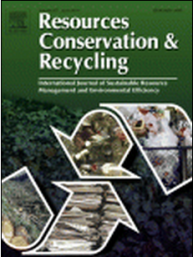
Energy and carbon dioxide intensity of Thailand’s steel industry and greenhouse gas emission projection toward the year 2050

Abstract
The purpose of this article is to study the energy and carbon dioxide intensities of Thailand’s steel industry and to propose greenhouse gas emission trends from the year 2011 to 2050 under plausible scenarios. The amount of CO2 emission from iron and steel production was calculated using the 2006 Intergovernmental Panel on Climate Change (IPCC) guidelines in the boundary of production process (gate to gate). The results showed that energy intensity of semi-finished steel product was 2.84 GJ/t semi-finished steel and CO2 intensity was 0.37 tCO2eq/t semi-finished steel. Energy intensity of steel finishing process was 1.86 GJ/t finished steel and CO2 intensity was 0.16 tCO2eq/t finished steel. Using three plausible scenarios from Thailand’s steel industry, S1: without integrated steel plant (baseline scenario), S2: with a traditional integrated BF–BOF route and S3: with an alternative integrated DR-EAF route; the Greenhouse Gas emissions from the year 2011 to 2050 were projected. In 2050, the CO2 emission from S1 (baseline scenario) was 4.84 million tonnes, S2 was 21.96 million tonnes increasing 4.54 times from baseline scenario. The CO2 emission from S3 was 7.12 million tonnes increasing 1.47 times from baseline scenario.
Keywords:
Energy intensity; Carbon dioxide intensity; Thailand’s steel industry; Semi-finished steel; Finished steel
- Issues:
- Energy, Climate Change
- Region:
- Asia
- Country:
- Thailand
- Year Published:
- 2014
- Authors:
- Sirintip Juntueng, Sirintornthep Towprayoon, Siriluk Chiarakorn
- Institution:
- Resources, Conservation and Recycling (Journal)

